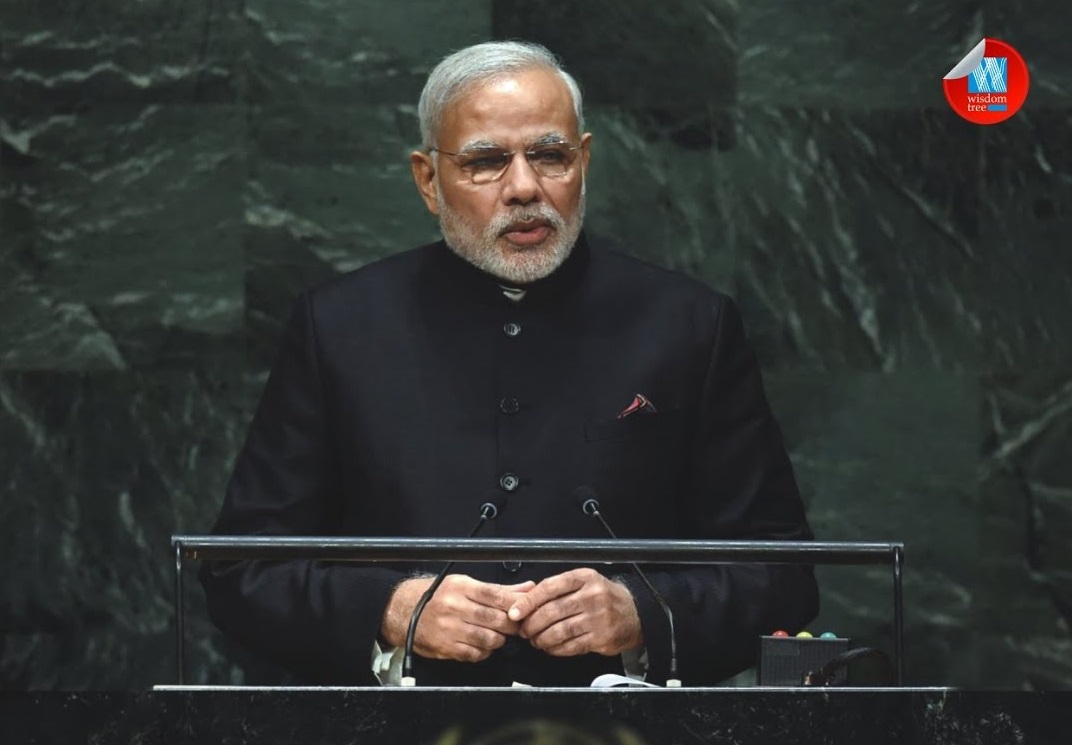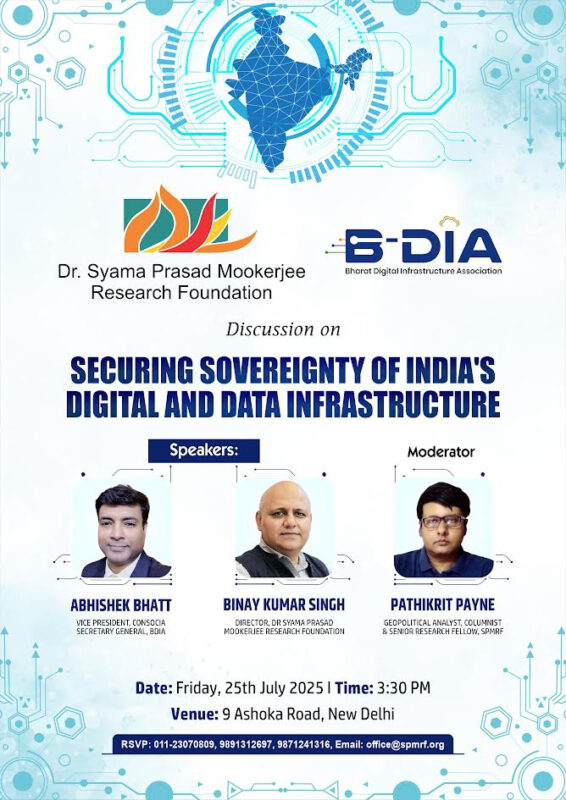This book is a concise collection that studies the new dimensions of Prime Minister Narendra Modi’s foreign policy strategy and is written by academics, diplomats, ex-bureaucrats, journalists and even entrepreneurs, writes Sreemati Ganguli
A nation’s foreign policy is like a flow of a river, it flows continuously with changes in Government. But the personality factor of a new leadership provides it with a path-breaking thrust, momentum and purpose. The post-May 2014 foreign policy of India bears the mark of the leadership of Prime Minister Narendra Modi, as now the orientations are less ambivalent, more focussed towards aspirational goals, and more assertive of the ways to follow. This is evident in India’s pursuit of membership in the Nuclear Suppliers Group; in holding re-christened versions of the International Fleet Review of the Indian Navy and India-Africa Summit; in promoting connectivity projects towards the East through Bangladesh-Bhutan-India-Nepal and India-Myanmar-Thailand transport projects, to Afghanistan and Central Asia through Iran, and the ambitious MAUSAM programme involving the Indian Ocean region; in putting soft power leverage, energy security, environmental concerns and humanitarian assistance as vectors of foreign policy; apart from making traditional issues of trade and technology transfer and defence postures more multi-layered in India’s foreign policy decision-making.
The book under discussion is a compendium of analyses on new dimensions of Prime Minister Modi’s foreign policy strategy by academics, diplomats, ex-bureaucrats, journalists and even entrepreneurs. The Modi Doctrine: New Paradigms in India’s Foreign Policy is divided in three parts — ‘Modi: A Global Leader but India First’; ‘Rajmandala of Bilateral and Regional Connect’ and ‘Thematically Tied to the World’ with 21 articles.
It presents some refreshing changes in approach — it does not follow the worn-out practice of including articles on Indo-Pak and Sino-Indian relations in any book on Indian foreign policy; and in lieu of Indo-Russian relations, it deals with the less publicised, but not less strategically significant relations with Central Asia (P Stobdan) — a vital link between India, Eurasia and Europe; with Afghanistan (Shakti Sinha) — a country whose stability impacts massively on the South Asia-Central Asian region and so, India’s presence is crucial there; and with Mongolia (Gonchig Ganbold) — a country with strategic location and abundance of renewable energy resources. Notably, it also focusses on two bilateral relations that are increasingly getting new momentum and meaning in the changing regional and global scenario in spheres of security, trade and energy cooperation — Japan (Takenori Horimoto) and Germany (Christian Wagner-Gaurav Sharma).
In a broad overview of Indian foreign policy in the last two years, Cleo Pascal analyses the positive gains as well as challenges before India, and in the context of different expectations of different global powers from India, notably comments that the Prime Minister ‘has been navigating all those expectations, against a backdrop of targeted hostility from those who don’t want to see India succeed, either because they see it as an economic competitor or as an existential threat’. Ramesh Thakur, on the other hand, offers some very significant suggestions to make multilateral fora like the United Nations, G-20, and BRICS, as platforms to meet India’s global aspirations through the use of ‘creative diplomacy’ as well as ‘ideational, normative and political leadership’.
Lisa Curtis provides a thorough analysis of Indo-US security ties, one of the most nuanced and multi-dimensional foreign policy initiative by the Prime Minister, that has regional and global implications, in the context of legitimate aspirations and concerns of both countries that need to be balanced by their respective relations with China and Pakistan. Quite interestingly, Horimoto also notes that ‘The rise of China is a critical driver of India-Japan rapprochement’.
In the regional context, the significance of the land border agreement between India and Bangladesh opens up new vistas of connectivity and multi-faceted cooperation as are stressed upon by Tariq A Karim and Shahbab Khan, in their respective articles; while the scope of bilateral opportunities and roadblocks are discussed in the context of Nepal (Hari B Jha) and Sri Lanka (A Abeyagoonasekera) — two crucial neighbours for maintaining regional power balance in South Asia.
Apart from discussions on economic diplomacy in view of enhanced FDI inflows and better economic management (Mukul Asher, Manoj Ladwa and to a certain extent, K Bilimoria), defence diplomacy (Nitin Gokhale), and diaspora diplomacy to involve the expatriate Indians in making a more prosperous and developed India (Sreeram Chaulia), some very interesting and important themes are focused on — energy diplomacy covering coal, oil and gas, solar, nuclear and renewable energy sectors (Virendra Gupta) and the experience of cleaning the Rhines in Bavaria and the possible Indo-German cooperation to clean Ganga in India (Martin Grambow-Uttam K Sinha- Hans-Dietrich Uhl) to signify the role of water security in nation building. Satish Chandra, in his analysis of India’s bid to secure the NSG membership, a crucial step to maintain strategic sovereignty and energy security, significantly questions China’s anti-India stance during the Seoul Plenary negotiations. Anirban Ganguly codifies new supporting pillars of foreign policy under Modi, eg, Samman, Samvad, Samriddhi, Suraksha and Sanskriti evam Savyata that can be marked though various interactions and speeches by the Prime Minister.
It is interesting that a number of articles here touch upon cultural connections, as Ganbold refers to India as Mongolia’s ‘Spiritual neighbour’, Sufism gets a mention by Stobdan and rivers are referred as ‘mini-cosmos’ of history, mythology and spirituality, apart from technological interventions by Grambow-Uttam Sinha.
This book is unique in its attempt to focus on the new facets and contours of the current foreign policy orientations of India, that is taking a definitive shape in accordance with the vision of the Prime Minister for India’s global role and status- aptly called The Modi Doctrine, but notably it analyses future challenges, constraints and irritants and put suggestions and policy prescriptions for the Government of the day, in a manner that foreign policy becomes a cooperative vector to the holistic development of India. It is not an easy task to scale the myriad nuances and layers of a country’s foreign policy, when it is still being shaped by domestic, regional and global pressures, but The Modi Doctrine reaches the target with an ease that attracts the interested readership of India’s foreign policy.
(The reviewer is a Fellow (Honorary) at Institute of Foreign Policy Studies, University of Calcutta)
(The views expressed are the author's own and do not necessarily reflect the position of the organisation)


